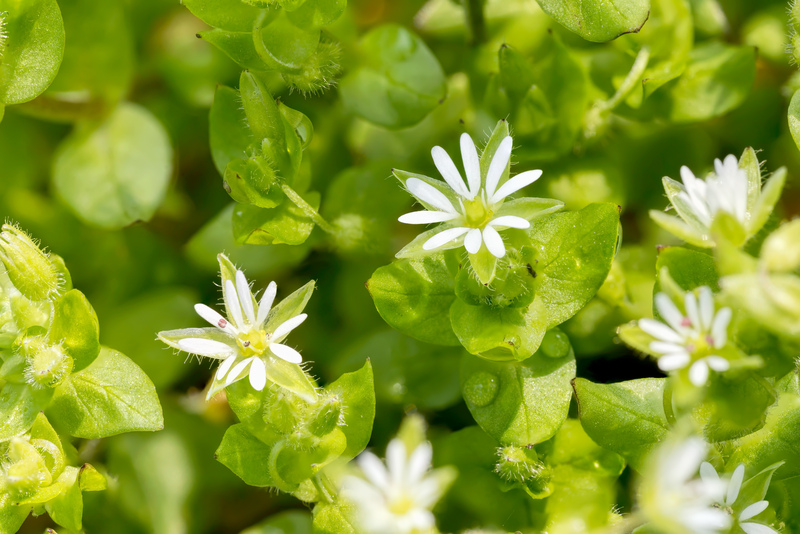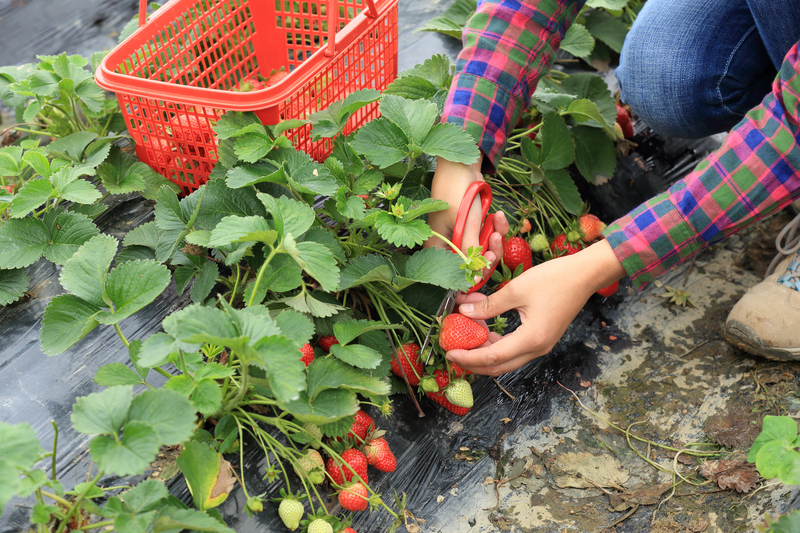Simplify Your Gardening Routine with These Weed Control Techniques
Posted on 18/08/2025
Simplify Your Gardening Routine with These Weed Control Techniques
Gardening brings beauty and tranquility to your space, but weeds can quickly turn your green retreat into a relentless chore. Are you tired of battling stubborn weeds that threaten your plants and spoil your yard's appearance? If so, it's time to explore effective weed control techniques that simplify your gardening routine and help you maintain a thriving, weed-free environment.
In this comprehensive guide, you'll find several proven weed management strategies, from organic prevention methods to modern mulch options. Whether you're a seasoned gardener or new to the hobby, these tips will allow you to spend less time weeding and more time enjoying your garden oasis.
Understanding Weeds and Their Impact on Gardens
Before we delve into practical garden weed control techniques, it's important to understand why weeds are a problem. Weeds are simply plants growing where they aren't wanted. They compete with your desired plants for nutrients, sunlight, water, and space. Some weeds can even harbor pests and disease, further stressing your prized flowers, vegetables, or shrubs.
- Annual weeds: Complete their lifecycle in one season and reproduce rapidly (e.g., crabgrass, chickweed).
- Perennial weeds: Return year after year, often more difficult to control (e.g., dandelions, bindweed).
- Invasive weeds: Aggressively spread and outcompete native species (e.g., Japanese knotweed).
By learning proactive and sustainable weed control methods, you can minimize their impact on your garden -- and simplify your maintenance routine.

Top Weed Control Techniques to Simplify Your Gardening
Let's explore a variety of weed management strategies you can implement, ranging from prevention to removal. Each approach has its merits, so choose those that best align with your garden type and personal gardening style.
1. Mulching: Nature's Weed Blocker
Mulching is one of the most efficient weed control techniques that also improves soil quality and conserves moisture. By covering the soil with a thick layer of organic or inorganic material, you deprive weeds of light, inhibit their growth, and maintain a tidy garden bed.
- Organic mulches: Straw, wood chips, shredded bark, compost, and grass clippings. These not only block weeds but also enrich the soil as they decompose.
- Inorganic mulches: Landscaping fabric, black plastic, or gravel. Particularly useful in permanent plantings and pathways where you want longer-lasting weed suppression.
Tip: Apply mulch 2-4 inches thick and refresh as needed, especially after heavy rain or wind. Keep mulch away from plant stems to prevent rot and pest problems.
2. Regular Hand Weeding: Simple but Effective
Sometimes, traditional hand weeding with a trowel or hoe is the most straightforward solution, especially for small beds or when dealing with aggressive invaders. Remove weeds while they're young and before they set seed to prevent future outbreaks.
Quick tips for effortless hand weeding:- Weed after rain or watering - moist soil makes removal easier.
- Use a long-handled hoe for larger areas, targeting just below the soil surface.
- Dispose of weeds properly, especially if they are flowering or have gone to seed.
Consistency is key! A few minutes of weeding each week can prevent major infestations and make your gardening experience much more enjoyable.
3. Smothering Weeds with Landscape Fabric or Newspaper
Suppressing weeds by excluding light is a weed prevention technique that works well in both vegetable and ornamental beds. Use landscape fabric, cardboard, or several layers of newspaper topped with mulch to create a barrier that starves weeds of the sunlight they need to grow.
- Landscape fabric: Durable and effective for several years, especially under perennial shrubs or walkways.
- Cardboard or newspaper: Eco-friendly, biodegradable alternatives for vegetable gardens. Ensure complete soil coverage for best results.
Be sure to cut holes for your plants and secure the smothering material with landscape pins or rocks to prevent shifting in wind.
4. Utilizing Cover Crops in Off-Seasons
If you practice vegetable gardening, planting cover crops (or "green manure") in the off-season can help control weeds naturally. Crops such as clover, rye, and vetch form a dense mat that outcompetes weeds, while also enriching the soil with organic matter and nutrients.
- Sow cover crops in late summer or early fall after your main crops are harvested.
- Mow or turn under the cover crop in early spring before planting your garden for the new season.
This proactive strategy improves your soil and dramatically reduces weed pressure the following growing season.
5. Embrace Dense Planting and Ground Covers
Dense planting is a simple, aesthetic way to limit open soil where weeds can take root. Choose ground covers like creeping thyme, sedum, or vinca minor that form a tight mat and naturally crowd out unwanted growth. In flower beds, spacing your desired plants closer together can also help minimize weed germination.
- Integrate living mulches for year-round ground cover and beauty.
- Mix low-growing perennials, ornamental grasses, and flowering annuals for visual interest and weed suppression.
Dense planting both simplifies your weeding routine and adds lushness to your landscape design.
6. Use Targeted Organic Herbicides Safely
For persistent or particularly tough weeds, targeted application of organic herbicides can be effective without harming the environment. Look for products based on vinegar, citrus oil, or fatty acids, and always follow label instructions carefully.
Alternatively, you can make your own non-toxic weed killer by mixing white vinegar and a few drops of dish soap. Apply directly onto weeds during a sunny day for best results.
Important:- Avoid spraying on windy days to prevent harming nearby plants.
- Reapply as needed, especially for perennial weeds.
- Organic herbicides work best on young, actively growing plants.
7. Preventative Practices and Garden Design Tweaks
The best weed control method is often prevention. Consider these simple tweaks to make your garden less inviting to weeds and easier to maintain:
- Edge your beds: Create a physical barrier between lawn and garden beds using metal, stone, or plastic edging to deter weed encroachment.
- Solarize new beds: Cover soil with clear plastic for 4-6 weeks in summer to kill weeds and seeds before planting.
- Water wisely: Drip irrigation or soaker hoses deliver water directly to plant roots, reducing open, wet soil that encourages weed growth.
- Quickly address bare soil: Cover all exposed earth with mulch, plants, or a temporary ground cover to deter opportunistic weeds.
Maintaining a Weed-Free Garden: Long-Term Strategies
Once you've implemented some (or all!) of these weed management techniques, it's important to maintain your progress. Consistency and vigilance are your allies in the ongoing battle against weeds.
Regular Monitoring and Early Intervention
Walk your garden frequently. Spotting and removing new weeds when they're small is far easier than dealing with mature, deep-rooted invaders. Keep your tools handy so you can remove weeds as you see them, and aim for weekly inspections during the growing season.
Keep Tools Clean and Sharp
Dirty tools may spread weed seeds or plant diseases. Regularly clean and disinfect your gardening tools, and keep blades sharp for efficient weed removal. A sharp hoe or trowel makes quick work of even the most stubborn roots.
Encourage Healthy Plants
Healthy, vigorously growing plants are wonderful natural weed suppressors. Fertilize, prune, and water as needed to encourage robust growth. Dense, strong plants leave little space for unwanted weeds to establish.
Eco-Friendly and Sustainable Weed Control
Many gardeners are moving away from harsh chemicals, opting instead for eco-friendly weed control techniques that protect pollinators, wildlife, and soil health. Organic mulches, manual removal, cover crops, and biodegradable smothering materials all fit within a sustainable, chemical-free gardening routine.
- Avoid synthetic herbicides unless absolutely necessary.
- Encourage biodiversity for natural pest and weed suppression.
- Reuse garden waste: Turn weed-free plant trimmings into compost or mulch.

Common Mistakes in Weed Control (and How to Avoid Them)
Even experienced gardeners can fall into habits that make weed problems worse. Avoid these common weed control pitfalls:
- Disturbing the soil too often: Excessive tilling brings buried weed seeds to the surface. Minimize soil disruption whenever possible.
- Ignoring the power of mulch: Skipping mulch or spreading it too thin gives weeds room to grow.
- Letting weeds go to seed: Even one missed plant can produce thousands of new weed seeds for next season.
- Applying the wrong herbicide: Not all products are safe for vegetable gardens or nearby plants - check labels and choose appropriate solutions.
Conclusion: Upgrade Your Gardening with Smarter Weed Control Techniques
Simplifying your gardening routine is all about working with nature--not against it. By implementing these weed control techniques--from mulching and dense planting to strategic prevention and organic solutions--you can reduce weeding chores and enjoy a vibrant, healthy garden all season long.
Invest a little time upfront, and you'll reap the rewards of a low-maintenance, weed-free landscape. Your future self will thank you for adopting effective weed management methods that keep your garden looking its best--naturally and sustainably.
Ready to transform your gardening experience?- Start with mulch
- Boost your plant density
- Try eco-friendly weed barriers
- Maintain regular inspections
Choose the combination of weed control strategies that best fits your garden, and simplify your gardening routine today!

